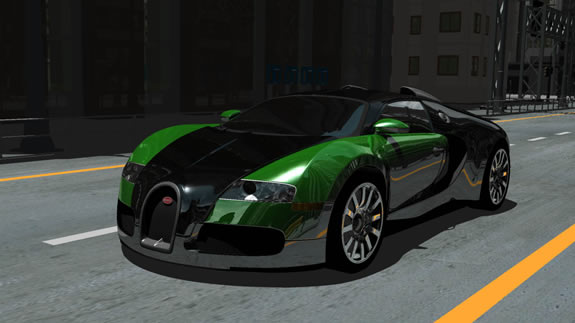NVIDIA to Ship OpenGL 3.0 Specification
Beta drivers available, plus ray tracing is now interactive on the GPU.
Latest News
August 19, 2008
By DE Editors
Just after the Khronos Group (Beaverton, OR) announced the new OpenGL 3.0 standard at SIGGRAPH 2008, NVIDIA Corporation (Santa Clara, CA) released beta drivers for the cross-platform, 3D graphics standard.

The new drivers implement the OpenGL 3.0 API and the GLSL 1.30 shading language for both Windows XP and Windows Vista on selected GeForce and Quadro boards. With these drivers any developer can now explore the capabilities of the new OpenGL 3.0 specification.
NVIDIA will be releasing production drivers for OpenGL 3.0 as a part of its regular driver development program. The drivers are free of charge. The new 3.0 version introduces new functionality that includes vertex array objects, enhanced vertex buffer objects, 32-bit floating-point textures, render and depth buffers, new texture compression schemes, sRGB frame buffers, and an upgraded shading language.
The OpenGL specification provides software developers with a set of programmable 3D and 2D graphics rendering, visualization, and hardware acceleration functions, allowing a program to run on a variety of hardware platforms. OpenGL, an open, vendor-neutral standard, is said to be the industry’s most widely used and supported programming interface and is available on Windows, Linux, and Mac OS.
OpenGL and OpenGL ES standards are controlled by the Khronos Group, an industry consortium creating open standards to enable the authoring and acceleration of graphics and dynamic media on many platforms and devices.
Also at SIGGRAPH 2008, NVIDIA demonstrated what it is calling the world’s first fully interactive GPU-based ray tracer. Based purely on NVIDIA GPU technology, the ray tracer shows linear scaling rendering of a highly complex, two-million polygon, anti-aliased automotive styling application. At three bounces, performance is demonstrated at up to 30 frames per second (fps) at HD resolutions of 1920x1080 for an image-based lighting paint shader, ray traced shadows, and reflections and refractions running on four next-generation Quadro GPUs in an NVIDIA Quadro Plex 2100 D4 Visual Computing System (VCS).
Read recent DE coverage on NVIDIA at SIGGRAPH, “NVIDIA Announces Quadro FX Notebook with 1GB GPU and Quadro Plex Systems,” (August 2008).
For details, contact NVIDIA.
Sources: Press materials received from the company and additional information gleaned from the company’s website.
Subscribe to our FREE magazine, FREE email newsletters or both!
Latest News
About the Author
DE’s editors contribute news and new product announcements to Digital Engineering.
Press releases may be sent to them via [email protected].






